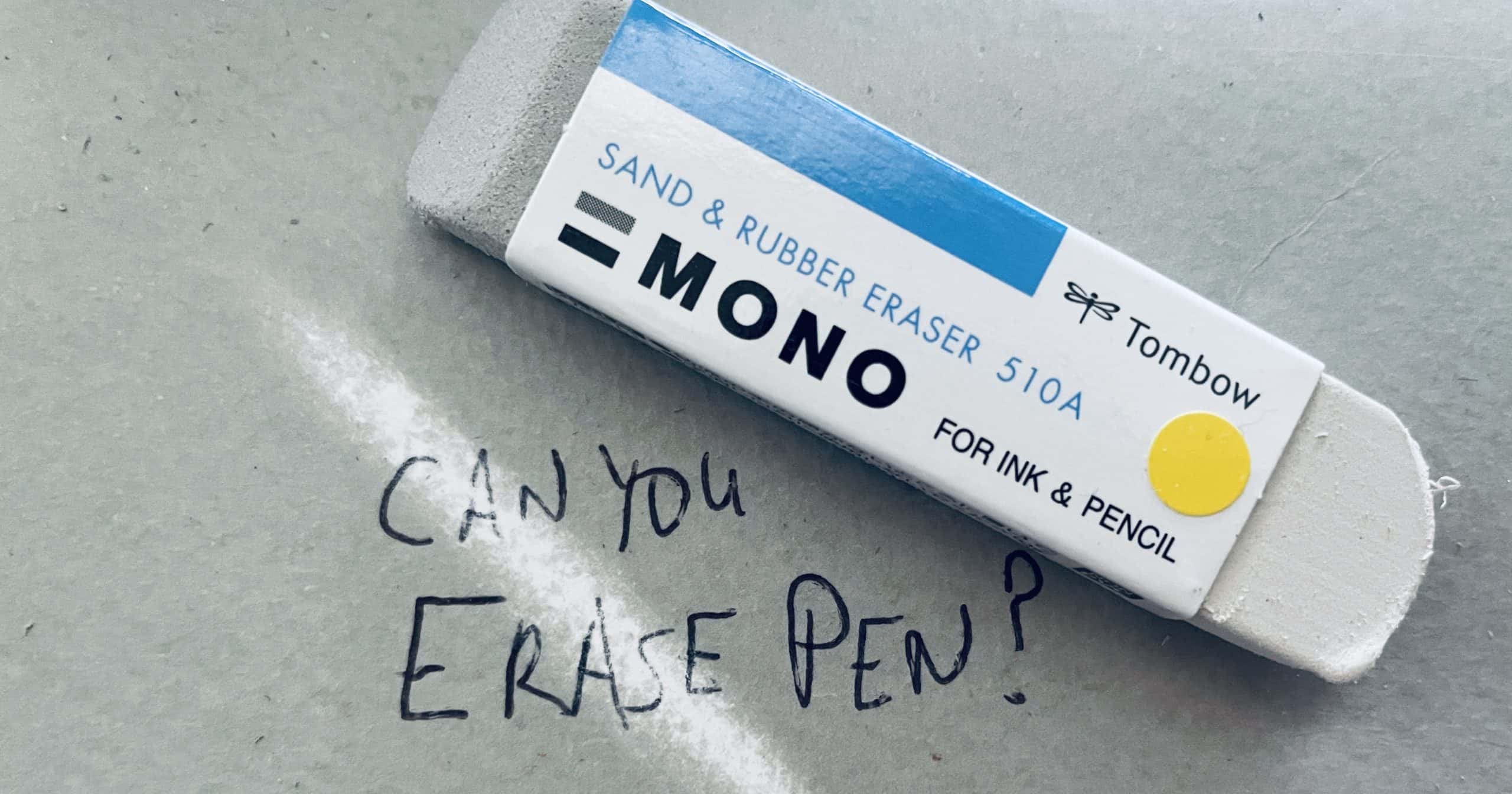Pen ink is designed to not be removable from paper, but sometimes mistakes happen. When they do, how do you remove pen ink from paper?
Why Removing Pen Is Difficult
This is obvious in practice, but might not be something you’ve thought much (or deeply) about… but why is removing pen so hard? There are three main reasons.
First of all, pens use ink and ink is design to enter the paper not sit on top of it (the way pencil graphite does). The amount of penetration will vary based on the ink and paper, but it always happens which means the ink is bonded with the paper and a surface erasing won’t get the job done.
Second, many inks are oil-based. Oil-based ink isn’t easily removed even though it doesn’t enter the paper as deeply as water-based ink but the oil is super resilient and sticks to the paper quite persistently. Ballpoint inks are highly resistant to erasing and other forms of wear, and won’t disappear until you start removing the paper itself.
Lastly, while most inks use dye to add color, other use pigments. Pigments are physical color element (as opposed to a chemical one) where micro-particles of color are added of the paper and bond closely with the paper fibers. So while a dye can often be washed out this isn’t the case with pigment-based inks — like the Uni-ball One — which is considered water-proof and tamper-proof.
Weird Hacks To Skip
There are many strange pen erasing hacks that don’t work and aren’t worth trying. These are often suggested online but haven’t be tested rigorously and don’t take into account that most of them will destroy the paper. Here are some things not to try…
- Bleach
- Ammonia
- Nail polish remover
- Hair spray
- Rubbing alcohol
This isn’t problem that needs to be tackled creatively or with MacGyver-like hacks, you’ll waste your time and ruin your paper.
Ink Removal Testing Results
We’ve been doing a lot of testing to figure out the best ways to remove ink from paper. Here is one of our ink removal test sheets…
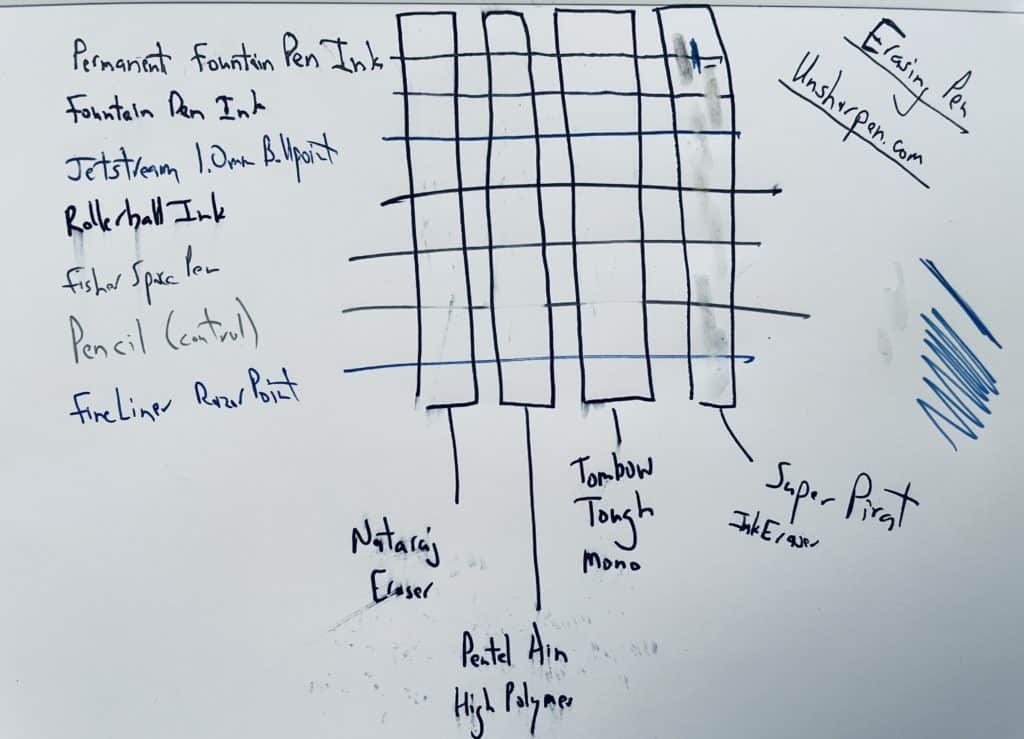
This particular test utilized:
- a standard pencil eraser
- a high-end pencil eraser
- a sand-style “tough” eraser
- ink remover
In this particular set of tests, the erasers were totally ineffective and did nothing more then hurt the paper and lighten the inks by a fraction of a shade. The Pelikan Super Pirat “Ink Eradicator” was effective against the standard fountain pen ink and partially against the fineliner, but didn’t to anything against the tougher inks.
Note: In all testing the erasing/removing was stopped once the paper started to become damaged. Any pilling, sloughing, shedding or other damage caused that part of the test to be stopped.
Here is a high-resolution image of another test…
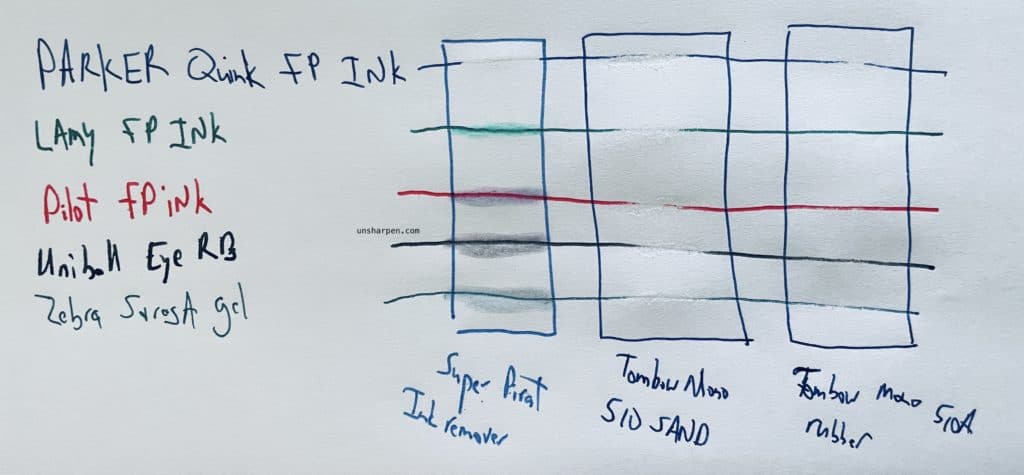
You can see that the Super Pirat (the same product as the Bic Ink Eater), which is an ink eraser designed to work with royal blue ink, did an amazing job with the Parker blue fountain pen ink. It failed entirely with the other ink colors.
Erasing with a Tombow Mono 510A eraser, which is half sand and half tough rubber was able to remove the ink, but only by removing the paper there the ink was located. This means rough, unsightly spots in the paper which are prone to further damage and are difficult to write on. The gritty sand side of the eraser removes lots of paper quickly because it’s basically sand paper, while the rubber side has less impact.
Basically, we bought a number of erasers, pens, solvents, etc. and did a lot of testing in order to produce this article. Below we will present the summarized results in order to save you from having to do the same amount of testing and experimentation.
Ways To Remove Ink From Paper
So summarize our test results, here are some ways you can effectively remove ink from paper.
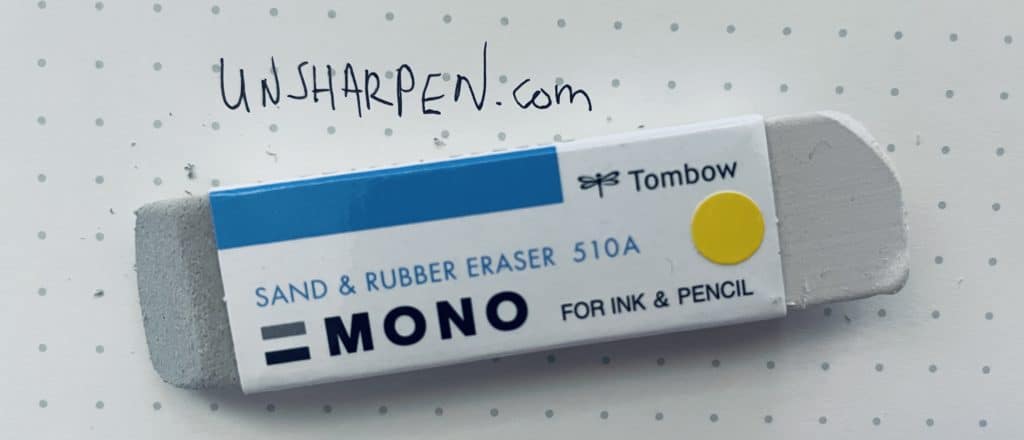
Sand Eraser
A sand eraser, also known as a silica eraser, is an eraser with a gritty design. It wears down the paper much faster than a typical eraser thanks to that abrasion sand. This is the sort of eraser favored by some artists who use very heavy paper and need to remove ink from time to time. These erasers are designed to remove ink by removing paper, but if you have a sufficiently thick paper and you are going to be later covering it with paint, ink or some other medium, then that can be OK.
These so-called ink erasers are easy to find and typically sell for about $3 each, so they are very affordable.
- Tombow 510A: Half rubber and half sand
- Tombow 512A: Sand eraser
These aren’t really much different from using sandpaper on your work, but they are effective.
Paper Removal With Blade
Some artists opt to use a blade, like and Exacto knife. This is an old-fashioned technique that works on heavier papers, but it requires a deft hand a there is always the chance of slipping and cutting right through the paper (or cutting yourself).
This isn’t a technique we tested much and it’s not one we recommend, but it’s definitely something people have used in the past, particularly with 100 lb. and heavier papers designed for art and watercolor paints.
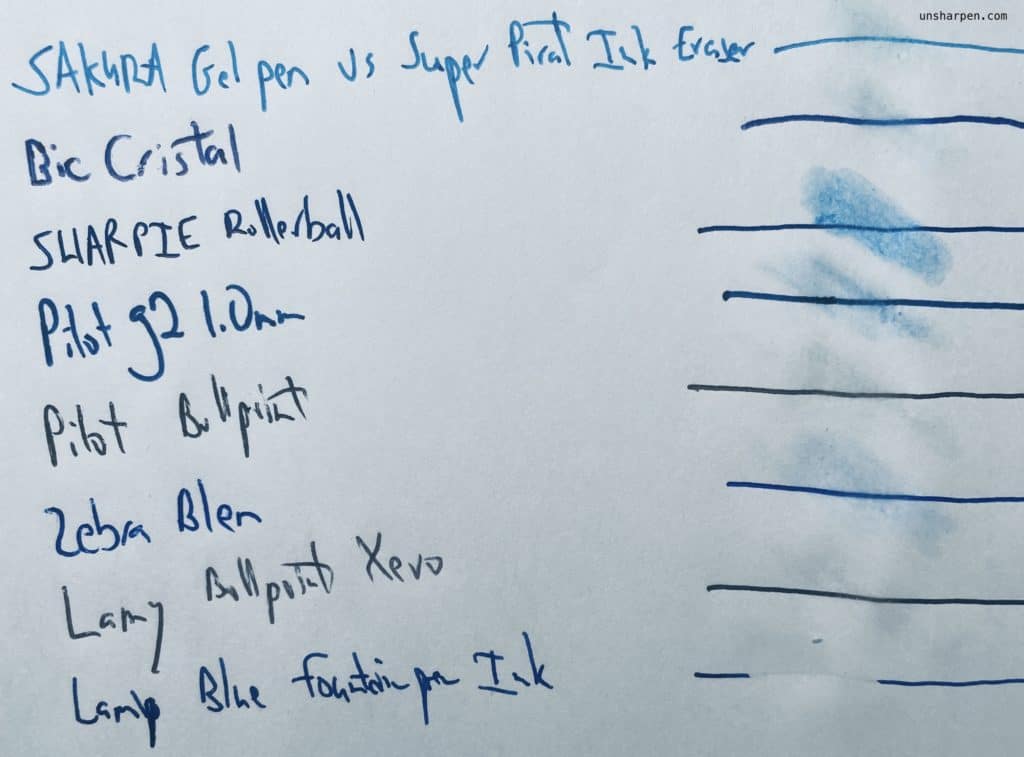
Ink Erasing Pen
A number of erasing pens are designed to remove ink from paper. These are normally some sort of detergent inside of a marker. The solvent in the marker breaks up the ink and the soft felt tip is designed to do as little damage to the paper as possible.
Some examples of these include:
- Pelikan Super-Pirat
- Bic Ink Eater
- Tide Pen
We’ve tested the Super-Pirat extensively and it’s remarkable effective, but only with certain inks. A single pass of the marker will completely hide most blue fountain pen and even some gel pen inks, but it’s totally ineffective against ballpoints, black ink, green ink, and most others. It’s an oddly specialized tool, but it’s incredible under the right circumstances, as you can see in the image above.
Cover It Up
You can, of course, just cover over the pen marks with some kind of white material in order to match the paper. This isn’t really removing or erasing the ink, so we won’t get into it much. Even so, some products that can do this are:
- White out
- Correction tape
- White gouache
- Deleter (usually sold as a comics/manga product)
And there you have it, a summary of how you can solve the difficult problem of removing ink from paper! Something we missed? Do you have a technique for simply washing the ink out that we have to try? Please send us an email with your suggestions.
